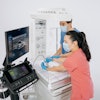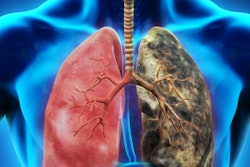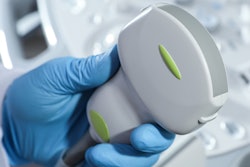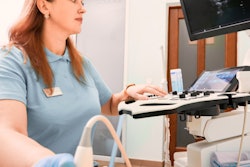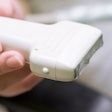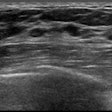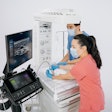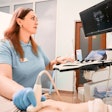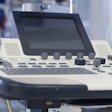
A novel ultrasound scoring system that can be performed in less than 10 minutes is accurate for COVID-19 diagnosis and prognosis, according to research published August 31 in Ultrasound in Medicine and Biology.
A team led by Dr. Michele Spampinato from the University of Ferrara in Italy said that their lung ultrasound severity index could distinguish between patients who have COVID-19 and those who don't. It also can better identify patients who will experience in-hospital mortality when compared with standard lung ultrasound severity scores.
"In such an epidemiological scenario, in which a huge number of patients are admitted for the same disease, early differentiation of patients with highly infectious disease from patients with other causes of respiratory distress is essential," Spampinato and colleagues wrote.
Chest imaging has been a primary method of diagnosing and evaluating the severity of COVID-19, with ultrasound being touted as easily accessible and not exposing patients to radiation. However, studies are generally based on score systems that do not consider the patchy ultrasound appearance of SARS-CoV-2 pneumonia. The researchers said this is due to the different patterns displayed in the same area.
"In our opinion, this issue could be relevant to better assess lung ultrasound diagnostic characteristics in SARS-CoV-2 pneumonia," they added.
Spampinato et al created their lung ultrasound severity index to better describe the coexistence of different lung lesions in the same lung area. This in turn can be used to measure the quality and extent of lung involvement in relation to COVID-19 diagnosis, as well as in-hospital mortality of patients with respiratory distress admitted for suspected COVID-19.
They tested the accuracy of the index in a study with 159 patients (105 male, 54 female) with an average age of 64.6 years with suspected SARS-CoV-2 pneumonia. Out of these, 63.5% were diagnosed with COVID-19.
COVID-19 patients had a higher mortality rate (18.8% vs. 6.9%) and lung ultrasound severity index score (16.14 vs. 10.08) compared with non-COVID-19 cases.
The team compared the index to several other measures, including lung ultrasound severity score, the simple sum of lung ultrasound findings, and a lung ultrasound heterogeneity score, the number of different ultrasound patterns found in each area.
| Prognostic characteristics of lung ultrasound scores for in-hospital mortality | |||
| Lung ultrasound heterogeneity score | Lung ultrasound severity score | Lung ultrasound scoring index | |
| Area under the receiver operating characteristic (AUROC) | 0.576 | 0.733 | 0.805 |
| Sensitivity | 69.57% | 65.22% | 90.91% |
| Specificity | 48.53% | 73.53% | 65.67% |
| Odds Ratio | 1.037 | 1.045 | 1.14 |
The researchers said the scoring index combines the strengths of the other two scoring methods, citing the index's higher AUROC scores. The index's AUROC score for diagnosing COVID-19 was 0.72 and 0.76 for predicting in-hospital mortality for COVID-19 patients. Both were higher than the severity and heterogeneity scores.
The team also touted the amount of time it takes to perform an ultrasound scan, which averaged 8.05 minutes, much less than the several hours it takes to get information from lab exams, swabs, and high-resolution CT. The team said by using lung ultrasound and applying the scoring index to identify high COVID-19 risk, doctors can make better decisions about further imaging, urgent therapies, and a patient's destination.
Spampinato and colleagues called for more validation studies for lung ultrasound scoring with large patient populations, different clinical settings, and comparison with other imaging methods.
"Researchers should make every effort to reach an agreement on a standard of reference in the conducting, reporting, and grading pulmonary involvement in SARS-CoV-2 pneumonia," the study authors wrote.




